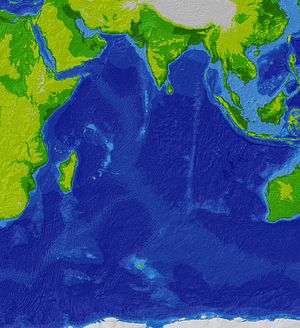In a recent article over at Flashpoints, Ankit Panda argues that India ought to play a bigger role in security in the Indian Ocean, its own strategic backyard. I agree. If India wants to be a major geopolitical player in Asia, it needs to leverage its geographic location to its full advantage.
India’s geographic advantages and its role in India’s grand strategy were clearly grasped by Lord Curzon of Kedleston, former Viceroy of India during the British Raj. Lord Curzon understood the geographic advantages of a state that ruled the subcontinent, truths that hold true today for an independent India. In his 1909 essay “The Place of India in the Empire,” he wrote:
It is obvious, indeed, that the master of India, must, under modern conditions, be the greatest power in the Asiatic Continent, and therefore, it may be added, in the world. The central position of India, its magnificent resources, its teeming multitude of men, its great trading harbors, its reserve of military strength, supplying an army always in a high state of efficiency and capable of being hurled at a moment’s notice upon any given point either of Asia and Africa- all there are assets of precious values. On the west, India must exercise a predominant influence over the destinies of Persia and Afghanistan; on the north, it can veto any rival in Tibet; on the north-east and east, it can exert great pressure upon China, and it is one of the guardians of the autonomous existence of Siam. On the high seas it commands the routes to Australia and the China Sea.
During the nineteenth and early twentieth centuries, the British-run Indian Empire and Indian Army, comprised of native Indian soldiers, was the dominant power in the Indian Ocean basin. India was the center of a massive network of trade and communication stretching from Aden to Singapore. Unfortunately, post-independence Nehruvian thinking in India squandered this advantage and allowed India’s informal empire of influence and trade to drift apart. Yet today, India is discovering its natural strategic horizons again. India’s strategy for increasing its influence in Asia must be guided by its location and play to its geographic advantages.
From Lord Curzon, we can understand that India’s central location in the Indian Ocean makes it the natural naval power in that ocean. India can use historical ties, the influence of diaspora communities, and the guarantee of security to increase its naval involvement in both the eastern and western extremities of the Indian Ocean, near the Straits of Malacca and in the Persian Gulf and the Red Sea. India would be able to increase its influence and earn the gratitude of smaller powers. As yet, India has no major rivals in the Indian Ocean, so it is extremely important for India to strengthen its naval capacities before such rivals appear, especially China. This is especially true since the ocean is one area where India, can in fact, exert maximum influence as opposed to some of the other regions that Lord Curzon mentioned.
For example, Lord Curzon pointed out that India could veto any rival in Tibet, but India has lost its position there since the People’s Liberation Army (PLA) of China moved into Tibet in 1950. Having lost control of the high ground — literally — in regards to Tibet, there is little India can do to exert influence in that direction, or over a stronger China. However, the other regions that Lord Curzon lists are still open to Indian influence. India could and should do more to shore up its relations with Southeast Asia, which shares both land and sea borders with India and the Indian Ocean. Much of Southeast Asia is indeed open to greater Indian involvement and would welcome it as a counterweight to too much Chinese influence in the region.
To the west, India retains some influence. However, the creation of Pakistan in between India and Iran, Afghanistan, and Central Asia makes it more difficult for India to project its influence directly into the regions to its west. Still, shared strategic concerns, historical ties, and economic interests can propel India to play a greater role in some of the countries to its west, especially Afghanistan, where it is already doing so. India’s only foreign military base is located in Tajikistan, which allows it to continue to be involved in Afghanistan and Central Asia. Despite the difficulties of projecting influence and power around Pakistan into Afghanistan and Central Asia and Iran, it is important for India to remain involved in these regions, because to do otherwise would be ceding influence there to other powers, especially China.
Modern India is situated between the Middle East, Central Asia, China, Southeast Asia, and the Indian Ocean. India must remember that it can use its location to its strategic advantage by projecting power outwards into all those regions. Additionally, India can also use its central location in the Indian Ocean to become a hub of transportation, communication, and trade. Although these facts should be obvious to anyone who looks at a map, India has often punched below its weight instead of taking full advantage of its strategic location. However, India is blessed with many resources and manpower reserves, which in addition to its geography, can be useful in establishing India as the dominant power in the Indian Ocean. By taking advantage of its geography and projecting power in neighboring regions where it can, India would improve both its security and prestige, foster a domestic climate of strategic thinking, and increase its overall influence in Asia. India must make the most of its location as soon as possible lest it be shut out of neighboring regions by other powers.

































